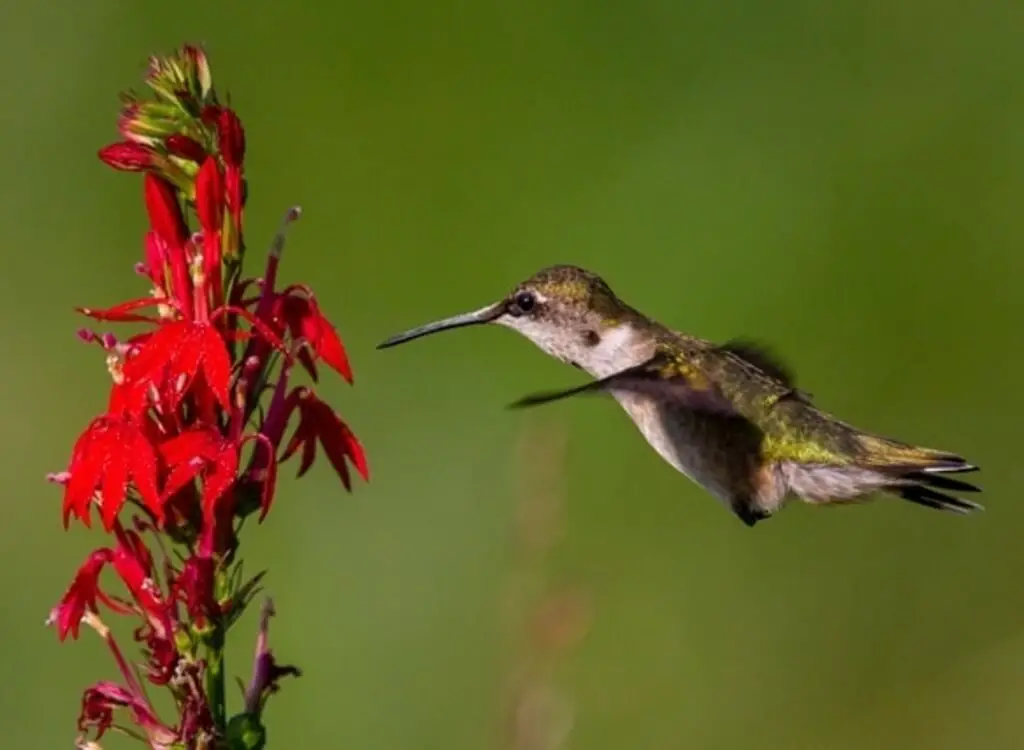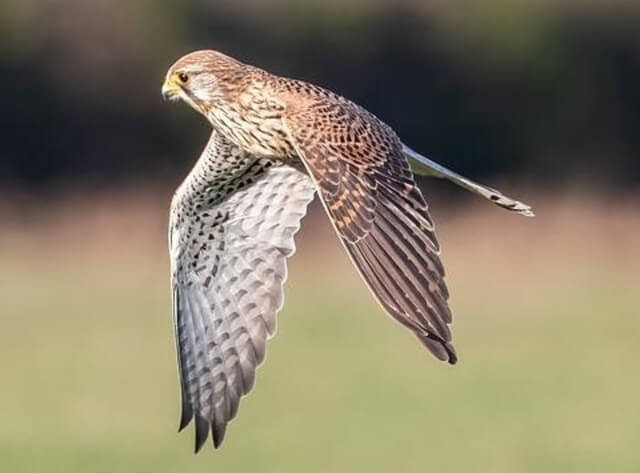In the world of bird watching, there are many kinds of birds that you can see hovering in the air. These include raptors, waterfowl and shorebirds. In this article, we will explore 14 of the most common types of birds that hover, with photos, identification and information on each one. We hope you enjoy this list and find it useful when planning your next birding trip.
Table of Contents
Birds That Hover
Hummingbirds
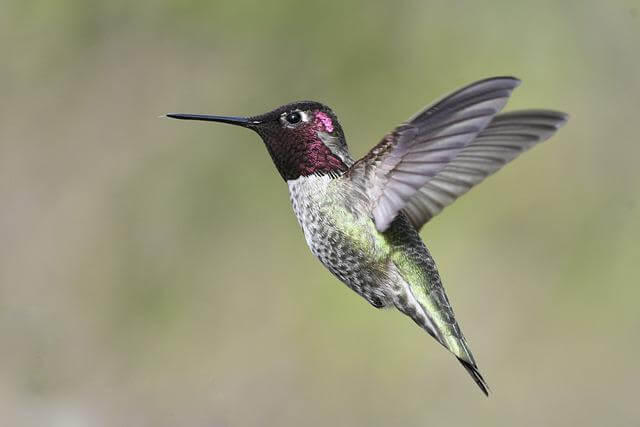
There are 330 different species of hummingbirds. They can be found in North and South America, as well as parts of Central America and the Caribbean. Hummingbirds typically inhabit warm, moist environments near water sources. Many species are found in forests, while others live in more open areas like meadows and deserts.
Hummingbirds feed primarily on nectar from flowers, but they will also eat insects, pollen, and fruit. One of the unique features of hummingbirds is their ability to hover in midair while feeding. This capability allows them to extract nectar from flowers that other birds cannot reach.\
Related Post: Where do Hummingbirds go in the Winter? (Explained)
Terns
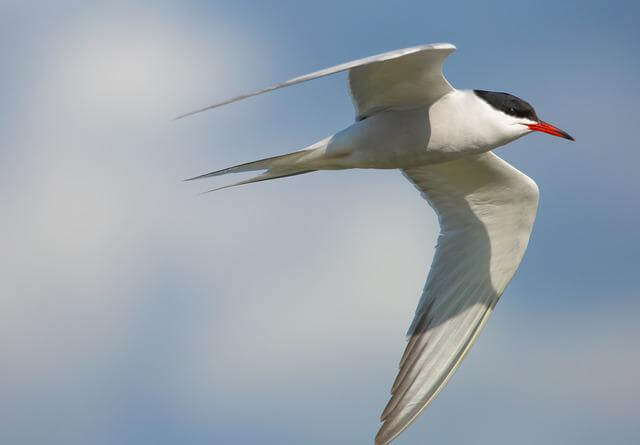
A common seabird, terns are often seen flying low over water. Terns have a wide range that includes North America, Europe, Asia, and parts of Africa. They live in a variety of habitats, including salt marshes, estuaries, open coastal waters, and even on inland lakes.
Terns eat mostly fish, but also eat crustaceans and other small aquatic creatures. They usually catch their prey by diving into the water, but they can also hover in flight like swallows to pick insects off the surface of the water.
Buzzards
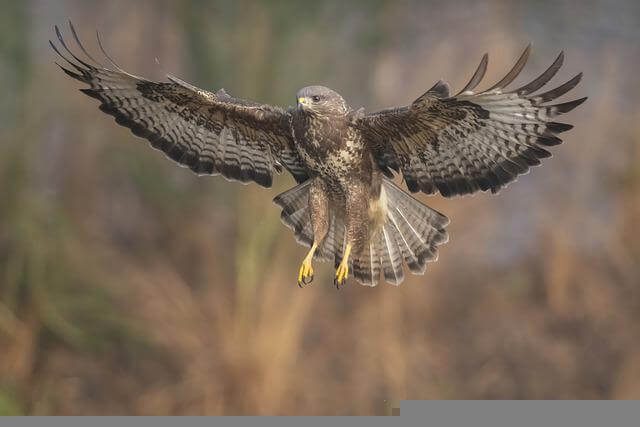
Buzzards are a group of birds in the family Accipitridae. There are 28 species of buzzard, which can be found on all continents except Antarctica. Buzzards are skilled hoverers and can stay aloft for long periods of time while watching for prey. The most frequently seen buzzard is the common buzzard (Buteo buteo), which is found in Europe, Asia, and North Africa.
This species has a range of up to 2,000 kilometers and inhabits open country with some trees or woodland. The diet of the common buzzard includes small mammals, birds, reptiles, amphibians, and insects.
Hawks
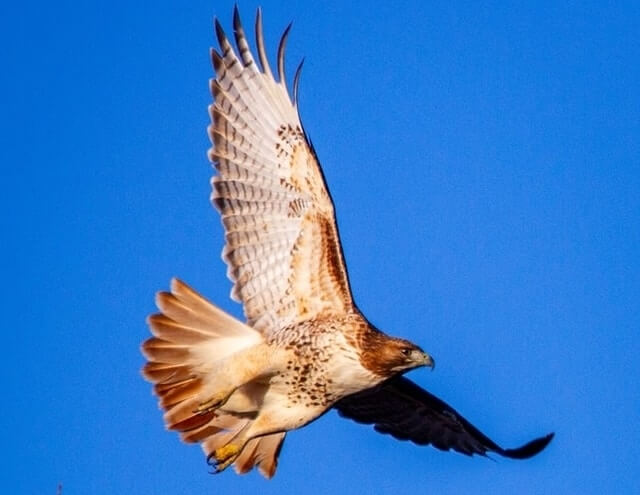
Hawks are a predatory bird of the Accipitridae family. They have a wingspan of 38-54 inches and weigh 1.5-4 pounds. The hawk’s diet consists mainly of small mammals such as rabbits, squirrels, and rats; however, they will also eat birds, lizards, and insects.
Hawks can be found throughout North America in open habitats such as fields, meadows, deserts, and marshes. They are usually solitary birds, but can sometimes be seen in pairs or small flocks. Hawks are known for their characteristic hunting method of hovering over their prey before swooping down to seize it.
Related Post:
- 57 Ferruginous Hawk Interesting Facts (Photos, ID & Info)
- 60 Fun Facts About Harris Hawks (with Photos, ID & Info)
- Interesting Facts About Red-shouldered Hawks (Detailed)
- 48 Northern Goshawk Fun Facts (Photos, ID & Info)
- 20 Cooper’s Hawk Fun Facts (with Photos & Information)
Eagles

Eagles are one of the most common raptors in the world. The different species of eagles can be found on every continent except Antarctica. Eagles are opportunistic predators and scavengers, and their diet reflects that. They will eat a variety of things, from small mammals to fish, to carrion. Some eagles have been known to hover over their prey, but not all species are capable of doing so.
Eagle species range in size from the diminutive Harpy’s Eagle, to the massive Steller’s Sea Eagle. The Bald Eagle is probably the best-known eagle in North America and is found throughout most of the continent. The Bald Eagle’s primary habitat is near bodies of water, where there is an ample food supply.
Related Post:
- How Fast Can Eagles Fly? (Everything You Need To Know!)
- 34 Interesting Facts About Golden Eagles (Detailed)
- 18 Interesting Facts About Bald Eagles (Photos & Details)
Kestrels
The kestrel is a small falcon found throughout the world in open habitats such as fields, meadows, and marshes. They typically eat insects, but will also consume rodents, reptiles, and birds. Kestrels are able to hover thanks to their specially adapted wings.
This allows them to stay stationary and spot prey from high up in the air. Kestrels can be found in all kinds of environments, from the Arctic tundra to the tropics. There are several different species of kestrels, each with their own range and habitat preferences.
Related Post:
- 50 Common Kestrel Facts (with Photos, ID & Information)
- 27 American Kestrel Fun Facts (with Photos, ID & Info)
Vultures
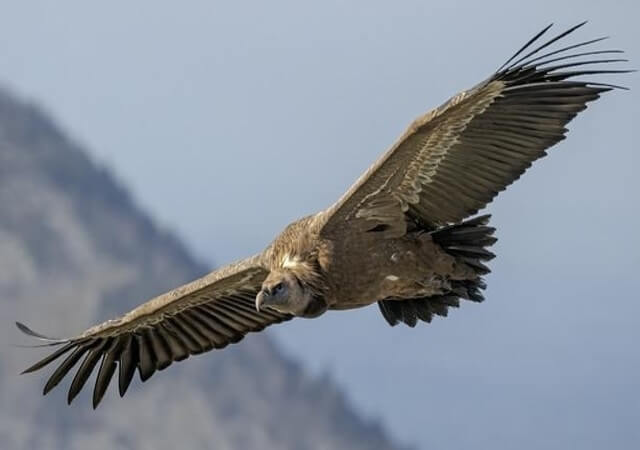
There are 23 vulture species in the world. Old World vultures in Europe, Africa, and Asia make up 16 species; New World vultures in North and South America include only seven recognized species. They live in many habitats, but they all have one thing in common, is that they love to eat dead things. Vultures can be found in North and South America, Europe, Africa, Asia, and Australia.
Vultures have a very good sense of smell, which helps them find food. They also use their keen eyesight to find carcasses from high in the sky. These birds rely on their keen eyesight to find food, and they often hover over their prey before swooping down to eat it.
Related Post:
- 18 Facts About Turkey Vultures That Will Shock You!
- 14 Largest Flying Birds In The World (Rank By Wingspan)
Harriers

The harrier (Circinae) is a 13 species of hawk in the family Accipitridae which also includes eagles, kites, and vultures. Except for Antarctica, they’re found on every continent. Harriers have a wide range of habitats, from open fields to dense forests, and they can be found in both rural and urban areas.
They typically eat small mammals such as rabbits and rodents, but they will also eat birds, reptiles, and insects. Harriers are able to hover for short periods of time to get a better view of their prey before swooping down to capture it. They use wind currents to help them navigate while flying.
Kingfisher
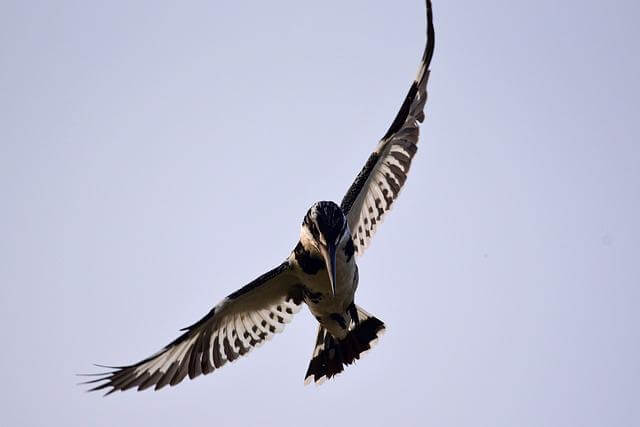
Kingfishers are a widespread family of birds found on all continents except Antarctica. There are around 120 species of kingfishers, and they vary in size from the pygmy kingfisher, which is just 5 inches long, to the giant kingfisher, which is over 18 inches long. Most kingfishers live in tropical or subtropical areas, but some species can be found in temperate regions. Kingfishers typically inhabit woodland areas near water sources such as rivers, lakes, or wetlands.
They are excellent fishermen and feed on a variety of fish, amphibians, reptiles, and insects. Some species also eat small mammals and birds. Kingfishers have unique hunting techniques. Many species hover over the water’s surface before diving to catch their prey. Others wade through the water or fly low over it to locate their prey.
Ospreys
The osprey (Pandion haliaetus) is a fish-eating bird of prey that is found in North America, Europe, and Asia. These raptors have a wide range, with habitats including forests, woodlands, wetlands, coasts, and open water. Ospreys typically build their nests near water sources such as rivers, lakes, or the ocean.
Ospreys are opportunistic hunters and feed mainly on fish; however they will also consume other aquatic creatures such as amphibians and crustaceans. Ospreys are able to hover over water to spot their prey before swooping down to catch it.
Related Post: 18 Fun Facts About Ospreys You Didn’t Know
Kites
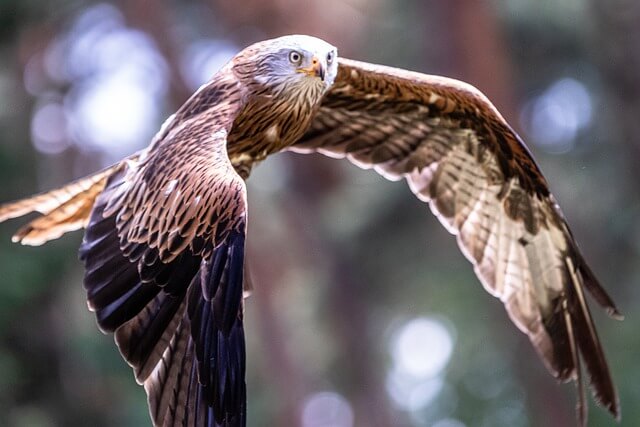
There are many types of kite species, but they all have some similarities. Kites typically have a large wingspan and soar effortlessly in the sky. They use their long, pointed wings to stay aloft and navigate by changing the shape of their wings in response to air currents.
Kites come from all over the world and can be found in a variety of habitats, including forests, fields, and wetlands. Their diets vary depending on the species, but most kites eat insects, rodents, or other small animals. Some species of kites also hover over their prey before capturing it.
Related Post:
- 55 Fun Facts About Red Kites (with Photos, ID & Details)
- 47 Fun Facts About Black Kite (with Photos, ID & Details)
Swallows
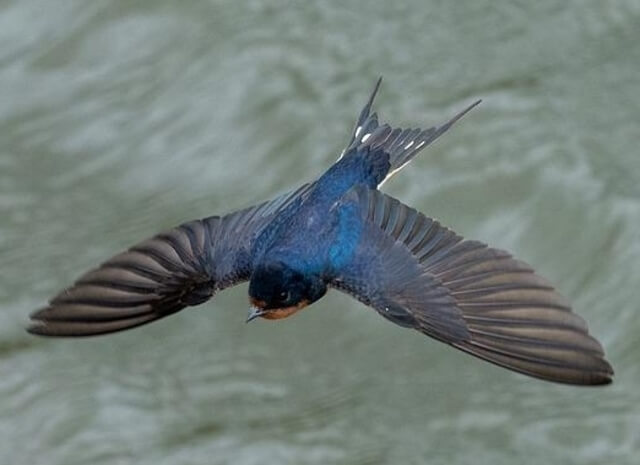
Swallows are a family of passerine birds found throughout the world. There are over 75 species of swallows, which range in size from the 4.5″ inch bank swallow to the 8″ inch Purple Martin. Swallows inhabit a wide variety of habitats, from deserts and open fields to wetlands and forests. Swallows are insectivores, and most species feed on flying insects while hovering in midair.
Barn swallows build their nests out of mud, straw, and other materials, while other swallow species use natural or man-made cavities for nesting. Swallow populations are thought to be declining due to loss of habitat and changes in climate.
Related Post: How to Attract Swallows to my Yard? (The Expert’s Guide)
Bluebirds

Bluebirds are three different species of birds that can be found in North America. The eastern bluebird is the most common, and can be found in fields and open woodlands. The western bluebird is also common, and can be found in the western United States in open areas such as deserts, grasslands, and scrublands.
The mountain bluebird is the least common, and is only found in mountainous areas. All three species of bluebirds eat mainly insects, but will also eat fruits and seeds. Bluebirds are able to hover while they are feeding because of the shape of their wings.
Related Post:
- 9 Best Birdhouses for Bluebirds (Top Picks for 2022)
- How to Attract Eastern Bluebirds to your Yard (Explained)
- 60 Fun Facts About Eastern Bluebirds (You Didn’t Know!)
Flycatchers
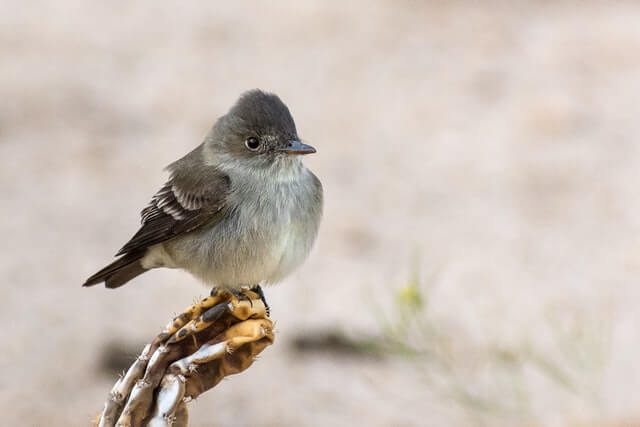
Flycatchers are a family of birds that number over 400 species. They range in size from the very small, 5″-inch Vermilion Flycatcher to the hefty Great Crested Flycatcher at almost 9″ inches long. All flycatchers are passerines, or perching birds. Except for Antarctica, they’re found on every continent.
Most flycatchers live in trees and eat insects, although a few feed on fruit or nectar. They catch their prey by hovering or by pouncing on it from a perch. Flycatchers are well known for their aerial acrobatics, including flying backward and upside down.
Related Post: 29 Birds That Eat Dragonflies (With Photos, ID & Info!)

